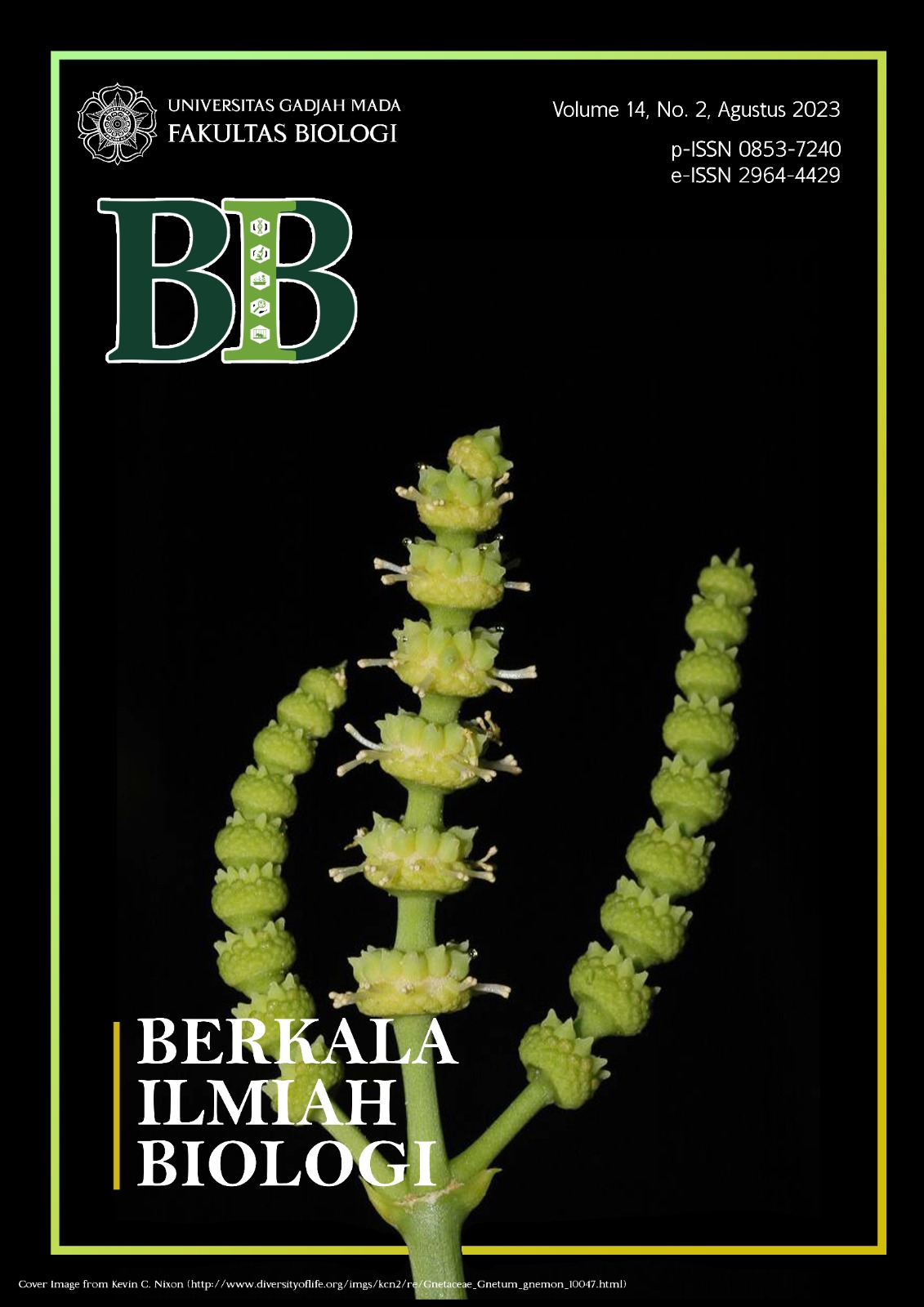Anatomical Structure and Histochemical Study Male Strobilus of Melinjo (Gnetum gnemon L.)
Isi Artikel Utama
Abstrak
Melinjo (Gnetum gnemon L.) is a plant from the Gymnospermae has many benefit, one of them is the melinjo male strobilus which is used as a vegetable. In melinjo plants there are various kinds of secondary metabolite compounds, especially the organs of leaves, seeds and seed coats, so that apart from being used as food ingredient it can be used as traditional medicine. This study aims to determine the anatomical structure and content of secondary metabolites in melinjo male strobilus. Observations of anatomical structures were made using paraffin methods, and observations of secondary metabolite content used histochemical tests using reagents on slices of fresh preparations then observed with a light microscope and were documented using OptiLab. The results of the observations revealed that anatomical structure of the nodes and internodes at the base, middle, and tip does not revealed that there was structural differences that composed of epidermal tissue, parenchyma tissue, and vascular bundle with xylem and phloem, but there were differences in size that are getting smaller from the base to tip. The structure of the male flowers revealed that there were structural differences with differentiation from the tip to the base of the anther with increasingly size of the cells epidermal tissue, degradation of parenchyma tissue at the middle layer and tapetum, and pollen have been formed. Histochemical test at melinjo male strobilus contained secondary metabolites such as phenolics, terpenoids, flavonoids, alkaloids, and tannins.
Rincian Artikel

This work is licensed under a Creative Commons Attribution 4.0 International License.


